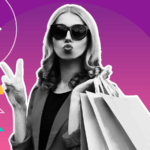By Garrison Dua, VP of Demand, AdsWizz
Today’s advertisers are operating in a market with more opportunities than ever to amplify their brand, but they also have greater expectations of certain guarantees, such as brand safety, for their coveted ad spend.
You can understand why when you look at the size of the podcast advertising market: eMarketer here on Insider Intelligence’s site predicts that US marketers will spend nearly $3 billion on podcast advertising by 2026, accounting for a third of all digital audio services ad spending.
And all this ad spend is for good reason – podcasting is one of the fastest growing channels. According here on Statista, almost 60% of all US consumers listen to podcasts which has doubled over the last 10 years. Global podcast listenership is expected to hit more than 500 million people by 2024, as published here on Statista – almost double what it was in 2019. According to a Discover Pods survey here on Riverside.fm, nearly 90% of podcast listeners think podcast ads are effective, and over 55% have purchased based on a podcast ad.
Brand marketers and advertisers are seeing tremendous growth in podcasts globally and want to scale their investments, but they are increasingly concerned their messages could become associated with programs and content not aligned with their brands.
Earlier this year according to this post on Inews, Neil Young and Joni Mitchell pulled their music catalogs from Spotify in response to accusations that The Joe Rogan podcast was spreading COVID-19 misinformation. The impact of this cannot be understated, especially when you consider that episodes of the podcast regularly pull in more than 10 million listeners.
Historically, it’s been challenging for advertisers to carry out intelligent, contextual targeting and buy podcasts in a scalable way to go beyond simple show-by-show sponsorship. It’s a rapidly expanding and highly fragmented market, and the content within podcasts is often relatively unknown, making brand safety uncertain.
This is not a unique challenge to podcasts – the digital video and news publishing industries have also faced brand safety concerns over the years. The most prominent players, Google and YouTube, have taken most of the brunt, with various scandals and subsequent advertiser boycotts over content appearing next to harmful material.
To combat this, YouTube employed machine learning technology to safeguard advertisers, a move that earned it content-level brand safety accreditation from the Media Rating Council (MCR) you can read about here on the Google blog for the past two years – the only platform to hold the distinction.
Similarly, intelligent tech tools can be used in podcasting to gain granular insight into content before advertising against it.
For example, advanced speech-to-text transcription technology has vastly streamlined content analysis. It provides advertisers with a clearer picture of what the podcast content covers and its context from reading the podcast or episode description alone. An accurate transcription can provide advertisers with the ability to target keywords efficiently.
Content-level analysis can also identify unique patterns to understand better concepts and context within a podcast rather than solely relying on keywords. For example, say there was a playing cards themed-podcast with an episode called ‘Playing Your Trump Card’. If ‘Trump’ in the political sense was on your anti-targeting list, the content-level analysis would still allow for advertising against this podcast because it would take in the entire episode.
Our AI Transcription Technology is the foundation for numerous types of advanced podcast targeting such as Contextual Audience segments and Comscore Brand Safety & Suitability segments. Our partnership with Comscore allows advertisers to target to or away from specific content with custom or pre-built safety filters such as “Safe from Negative News”, “Safe from Accidents” and “Safe from Crime/Violence”. Additionally, Brand Suitability allows advertisers to select segments for High/Medium/Low risk which include categories like hate speech, misinformation, etc
A seamless listening experience is a top priority for creators, publishers, and advertisers, so tone, timing, and the listener mindset need considerable regard when determining the perfect ad placement.
It’s imperative as an industry that we provide brands with a guarantee for brand safety. Supplying the right tools and intelligent technology solutions can enable the industry to grow in a way that is also safe for advertisers.







